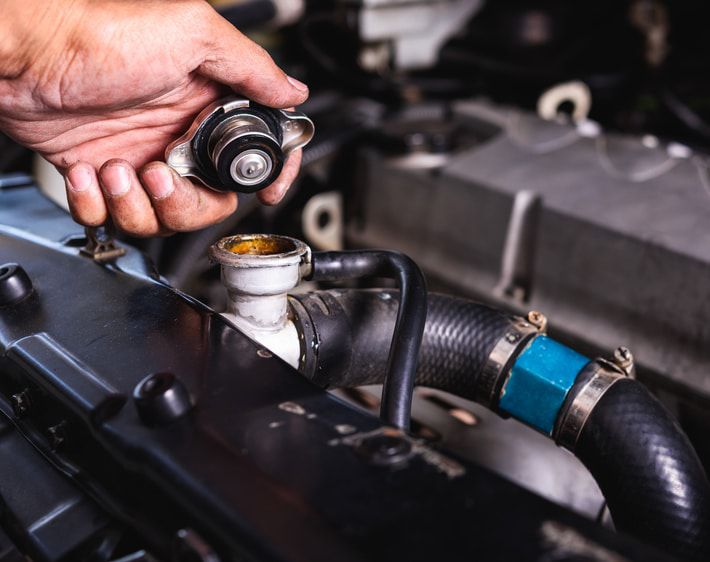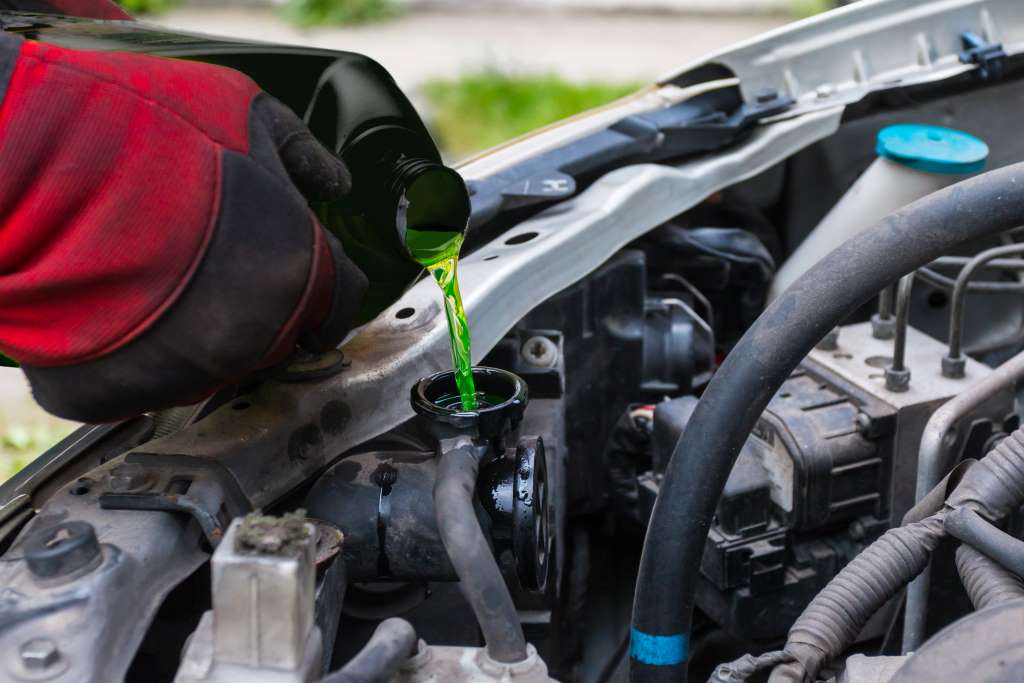Keeping your car cool is essential, and coolant (or antifreeze) is its superhero cape. But does the car need to be running when adding coolant? Let’s find out with Car From Japan right now!
Contents
Does The Car Need To Be Running When Adding Coolant?
Keeping your car cool is crucial, and coolant (or antifreeze) plays a vital role. But when adding coolant, should the engine be humming or resting?
Engine Off for Coolant Top-Up
In almost all cases, topping up coolant is safest with the engine completely off.
Coolant that’s been circulating through a hot engine gets scorching. Opening the radiator or reservoir when the engine is hot is like opening a pot of boiling water – it can cause serious burns. Wait for the engine to cool down significantly, ideally to the touch, before even considering adding coolant.
Engine On After Top-Up (Sometimes)
There’s one specific situation where running the engine after a top-up might be helpful. This applies if you’ve just flushed the cooling system. Flushing involves replacing all the old coolant with fresh coolant.
However, during this process, air bubbles can sometimes get trapped inside. Running the engine with the heater on helps circulate the coolant throughout the entire system, including the heater core, and can help to dislodge and expel any trapped air bubbles.

Why Coolant Matters: Preventing Overheating
The coolant system is a closed loop circulation system that plays a vital role in your engine’s health. It consists of several key parts.
- Coolant: A mixture of water and antifreeze that circulates throughout the engine. Antifreeze lowers the freezing point and helps prevent corrosion within the engine.
- Water pump: This pump, usually powered by the engine’s belt, is responsible for continuously circulating the coolant throughout the system.
- Engine block and head: Passages within the engine block and head allow coolant to flow around the cylinders and other hot components, absorbing heat.
- Radiator: This is the heat exchanger of the system. The hot coolant flows through the radiator where fins and tubes allow air to flow through, transferring heat from the coolant to the air.
- Coolant reservoir: A plastic tank that stores excess coolant when the engine is hot and the coolant expands. It also allows for easy visual inspection of the coolant level.
Maintaining the proper coolant level is crucial. If the coolant level is too low, the coolant won’t be able to circulate effectively, and the engine will start to overheat.
This can lead to significant engine damage, including warped cylinder heads, blown head gaskets, and even complete engine failure.
Signs of Low Coolant: Calling for a Coolant Top-Up
Several signs indicate low coolant levels, so it’s important to be aware of them:
- Elevated temperature gauge: Your car’s instrument cluster typically has a temperature gauge. If the needle starts to climb into the hot zone, it could be a sign of low coolant.
- Strange engine noises: As the engine overheats due to low coolant, it might start to make unusual noises like knocking or pinging.
- Warning light on the dashboard: Many modern cars have a dashboard light specifically for coolant level or engine temperature. If this light comes on, don’t ignore it – pull over safely and check your coolant level as soon as possible.

A Quick Checklist For Coolant Top-Up
Adding coolant is a straightforward task, but a few steps after topping up ensure everything runs smoothly. Don’t assume one go is enough!
After adding coolant, take a moment to recheck the level in the overflow tank. Make sure it falls within the recommended range (usually indicated by “MIN” and “MAX” markings).
If it’s still low, carefully add more coolant until it reaches the proper level. This double-check helps ensure you’ve added enough and haven’t missed any leaks in the system.
With coolant topped-up, it’s time to fire up the engine. Start it normally, then let it idle for a few minutes. This allows the fresh coolant to circulate throughout the system, distributing it evenly and ensuring proper engine cooling.
While the engine idles, become the temperature gauge’s best friend! Watch it closely to ensure the engine operates at its normal temperature range (usually indicated by a needle in the middle of the gauge).
If the temperature starts to climb significantly, turn off the engine immediately. Inspect the coolant level again. If everything seems okay, restart the engine and watch the temperature gauge to confirm it returns to its normal operating range.
FAQs
1. Can I add coolant to a hot engine?
While it is generally not recommended to add coolant to a hot engine due to the risk of burns from steam and hot liquid, some modern vehicles are designed with safety features that allow for this. However, it is always best to wait until the engine cools down to avoid injury and ensure proper filing.
2. Is there a specific type of coolant I should use when the engine is running?
No, the type of coolant required does not change whether the engine is running or not. Always use the coolant type recommended by your vehicle’s manufacturer, as specified in the owner’s manual.
3. Can adding coolant while the engine is running help in diagnosing cooling system issues?
Adding coolant while the engine is running can sometimes help identify coolant leaks or other issues in the cooling system as it allows you to observe the system under operating conditions. However, this should be done cautiously and ideally by a professional.
4. How do I know if the coolant I’m adding is circulating properly in the system?
When adding coolant to a running engine, you can monitor the temperature gauge and check for a consistent flow of coolant in the reservoir or through the radiator cap. This can help ensure the coolant is circulating properly. However, this method requires caution and proper knowledge.
5. What are the risks of adding coolant to a non-running engine?
Adding coolant to a non-running engine generally poses fewer risks compared to a running engine. However, you might not be able to detect immediate issues such as leaks or blockages that could be evident when the engine is running.
6. Does the car model affect whether the engine should be running when adding coolant?
Some modern car models have specific procedures for adding coolant which might involve the engine running at idle to help the coolant circulate and remove air pockets. Always refer to the vehicle’s owner manual for the correct procedure.
7. Can adding coolant while the engine is running affect the thermostat?
Adding coolant while the engine is running might help the thermostat open and close properly as it reaches its operating temperature, ensuring the system is working correctly. However, incorrect handling can cause the thermostat to malfunction.
8. What precautions should be taken if adding coolant to a running hybrid or electric vehicle?
For hybrid or electric vehicles, there may be additional considerations such as high-voltage components near the cooling system. It’s important to follow manufacturer guidelines strictly, and often it’s safest to have a professional handle the process.
9. Is there a specific sequence to follow when adding coolant to a running engine?
If adding coolant to a running engine, it’s generally advised to do so slowly and gradually to avoid rapid temperature changes that can cause stress to the engine components. Start by opening the radiator cap slowly, adding coolant in small amounts, and monitoring the system closely.
Check out this video from 2CarPros to learn how to add coolant properly!



